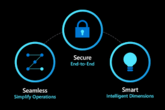Upgrade & Secure Your Future with DevOps, SRE, DevSecOps, MLOps!
We spend hours on Instagram and YouTube and waste money on coffee and fast food, but won’t spend 30 minutes a day learning skills to boost our careers.
Master in DevOps, SRE, DevSecOps & MLOps!
Learn from Guru Rajesh Kumar and double your salary in just one year.
Source:-infoq.com
In a recently published post, Microsoft announced the public preview of Event Grid on IoT Edge. With this announcement, event-driven scenarios using a publish/subscribe model with routing capabilities are now available on Internet of Things devices running anywhere.
Event Grid has been around on Azure since 16 August 2017 and provides a managed service for routing events between applications. These events adhere to one of three schemas, which generally consist of an envelope used to determine where it should send each message and some form of data depending on the originating application. For example, EventGrid is their out of the box schema, while CustomEvent allows an application to define its schema, and CloudEvents implements an industry standard for event-driven communication. Moreover, Event Grid performs communication using a push-push publish/subscribe mechanism as previously described on InfoQ by Steef-Jan Wiggers, Microsoft Azure MVP and Cloud Azure Technology Consultant.
The concept of Event Grid evolves around events emitted from a source (publisher), which can be an Azure service or a third party source that adheres to theevent schema.The event publishers in Azure include IoT Hub, Storage, and the recently added Event Hubs. Subsequently, the events are sent to a topic in Event Grid, and each topic can be one or multiple subscribers (event handlers). A topic can be configured with the event publisher or can be a custom topic for custom events. Finally, the event handlers reactto the events and process them. The event handlers in Azure include Functions, WebHook, and Event Hubs.
As such, events received by the service are then pushed out to one or more subscribers, using filtering to determine which subscriber is interested in which messages, while implementing mechanisms to ensure delivery such as retries and dead-lettering.
On the other hand, we have IoT Edge, another managed service that implements IoT capabilities on devices running outside of Azure. Integration with IoT Hub allows having communication between these devices and Azure. As such, IoT Edge provides options for working disconnected or with minimal data exchange, while still providing the opportunity to work with telemetry and take actions on them on the device. It does this using Docker containers called modules, combined with a runtime that orchestrates the messages between these modules.
This newly introduced capability means that Event Grid now available as a Docker container, which can run on IoT Edge. Consequently, it is now possible to send and receive events on these devices and can interact with modules on the same device, other devices, or services in Azure. Additionally, there is complete feature parity between Event Grid on Azure and IoT Edge, meaning the work the same as well.
Currently, the Blob Storage module is the only out-of-the-box module having integrated interaction with Event Grid, allowing the service to react whenever a placing a blob in a container. However, other modules can communicate with the service as well, for which they need to use the HTTP endpoints exposed, shown in the documentation as well.
To get started with these new capabilities, it is necessary first to have an IoT Edge device configured; however, this is also available as a Virtual Machine in the Azure Marketplace. Subsequently, set the desired modules in IoT Hub, which pushes the configuration to the device. The Docker images are then downloaded and installed, such as the module of Event Grid on Docker Hub, after which routing starts taking place. Several examples of this are available on the documentation, including local events, cloud exchange, and event forwarding.

 Starting: 1st of Every Month
Starting: 1st of Every Month  +91 8409492687 |
+91 8409492687 |  Contact@DevOpsSchool.com
Contact@DevOpsSchool.com